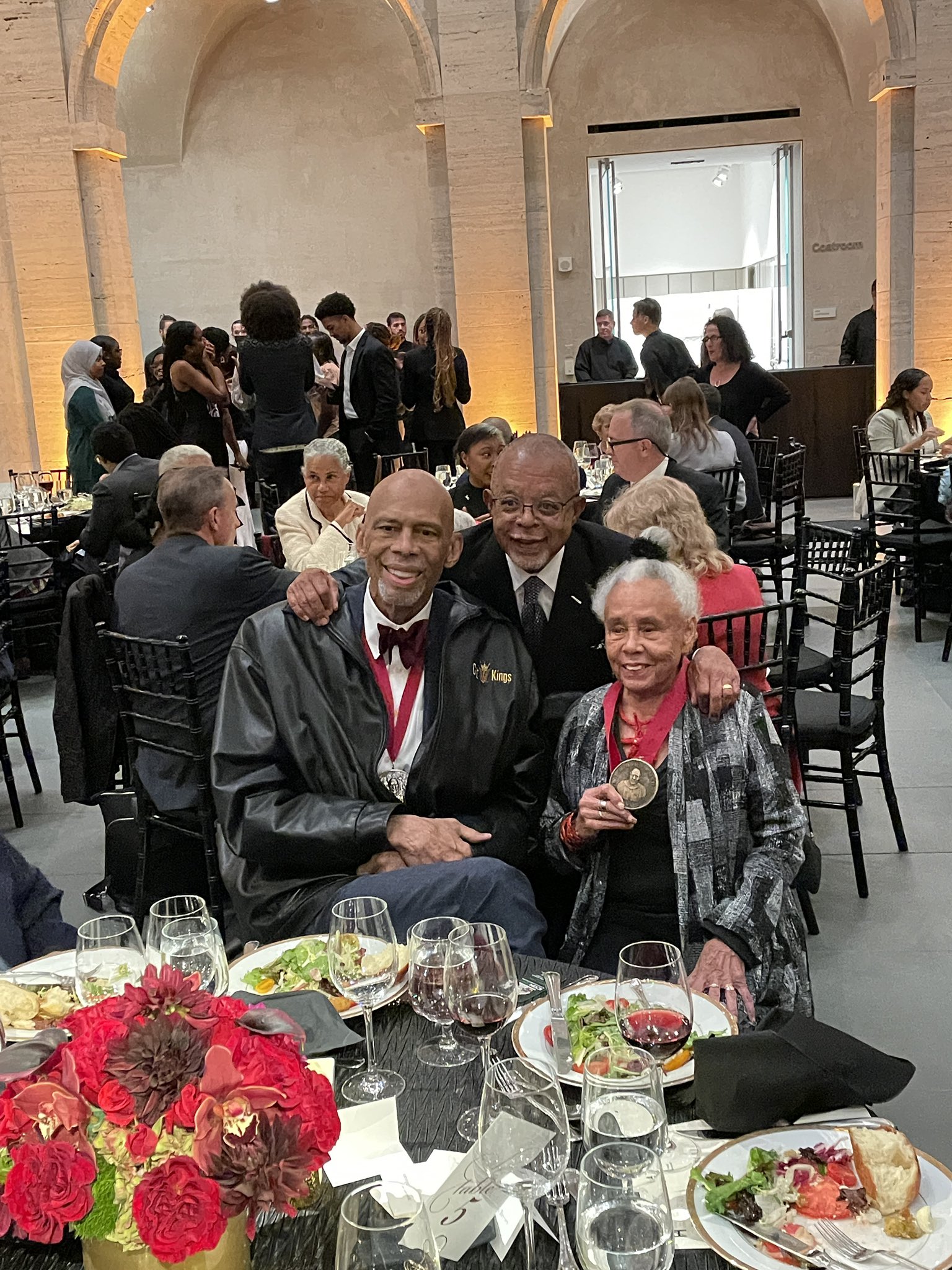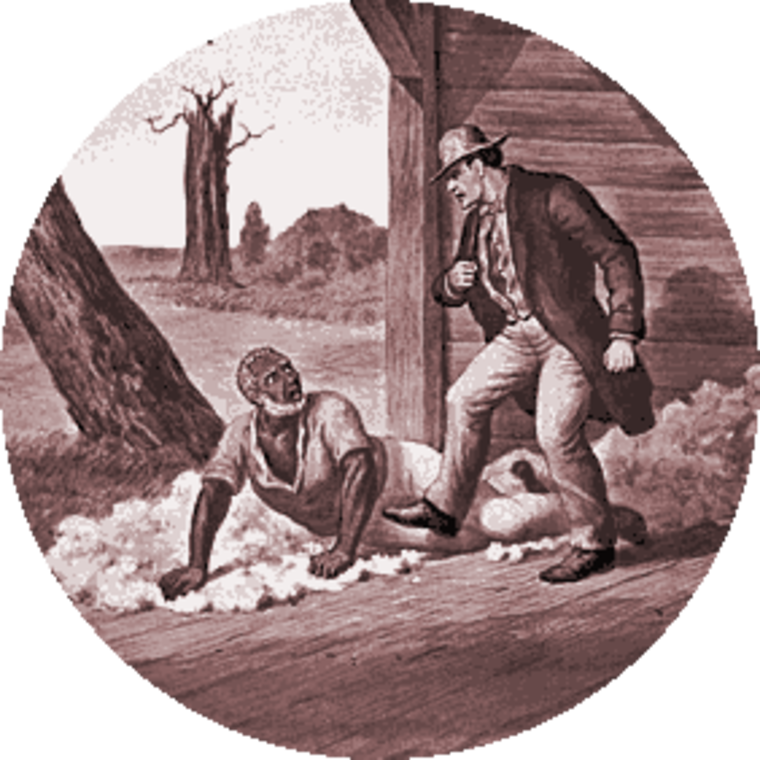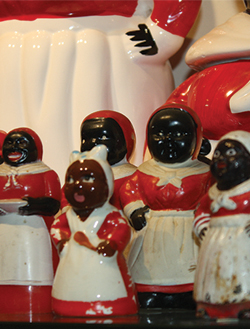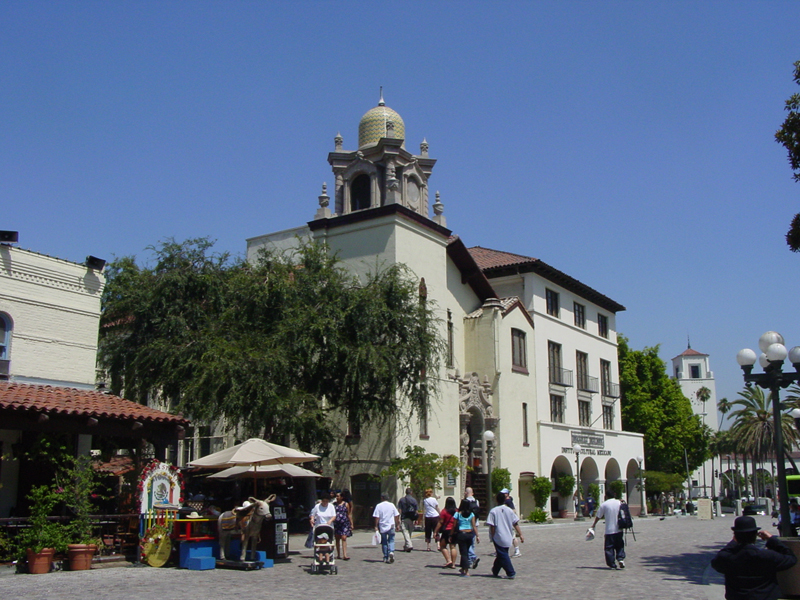|
Betye
Betye Irene Saar (born July 30, 1926) is an African-American artist known for her work in the medium of assemblage. Saar is a visual storyteller and an accomplished printmaker. Saar was a part of the Black Arts Movement in the 1970s, which engaged myths and stereotypes about race and femininity. Her work is considered highly political, as she challenged negative ideas about African Americans throughout her career; Saar is best known for her art work that critiques American racism toward Blacks. Personal life Betye Saar was born Betye Irene Brown on July 30, 1926, to Jefferson Maze Brown and Beatrice Lillian Parson in Los Angeles, California. Both parents attended the University of California, Los Angeles, where they met. Saar spent her early years in Los Angeles. After her father's death in 1931, Saar and her mother, brother, and sister moved in with her paternal grandmother, Irene Hannah Maze in the Watts neighborhood in Los Angeles. The family then moved to Pasadena, Califo ... [...More Info...] [...Related Items...] OR: [Wikipedia] [Google] [Baidu] |
Alison Saar
Alison Saar (born February 5, 1956) is a Los Angeles, California based sculptor, mixed-media, and installation artist. Her artwork focuses on the African diaspora and black female identity and is influenced by African, Caribbean, and Latin American folk art and spirituality. Saar is well known for "transforming found objects to reflect themes of cultural and social identity, history, and religion." Early life and education Saar was born in Los Angeles, California, to a well-known African-American sculptor and installation artist, Betye Saar, and Richard Saar, a ceramicist and art conservator.Clark, Erin. "Alison Saar." ''Artworks'' Winter (2008): 33-40. Print. Saar's mother Betye was involved in the 1970s Black Arts Movement and frequently took Alison and her sisters, Lezley and Tracye, to museums and art openings during their childhood. They also saw Outsider Art, such as Simon Rodia's Watts Towers in Los Angeles and Grandma Prisbrey's Bottle Village in Simi Valley. Sa ... [...More Info...] [...Related Items...] OR: [Wikipedia] [Google] [Baidu] |
Lezley Saar
Lezley Irene Saar is an African American artist whose artwork is responsive to race, gender, female identity, and her ancestral history. Her works are primarily mixed media, 3-dimensional, and oil & acrylic on paper and canvas. Through her artistic practice Lezley explores western and non-western concepts of beauty, femininist psychology and spirituality. Many works conjure elements of magical realism. She has exhibited widely in the U.S. and internationally. Her work is included in museum collections such as The Kemper Museum, CAAM, The Ackland Art Museum, the Smith College Museum of Art, the Studio Museum in Harlem and MOCA. She is currently represented by Walter Maciel Gallery in Los Angeles and Various Small Fires in Asia. Early life Lezley Irene Saar was born into a family of artists in Los Angeles. Her mother Betye Saar (née Brown), is an African-American assemblage artist and her father Richard Saar, was a ceramist and art conservator. She grew up surrounded by a ... [...More Info...] [...Related Items...] OR: [Wikipedia] [Google] [Baidu] |
Aunt Jemima
Pearl Milling Company (formerly known as Aunt Jemima from 1889 to 2021) is an American breakfast brand for pancake mix, syrup, and other breakfast food products. The original version of the pancake mix for the brand was developed in 1888–1889 by the Pearl Milling Company and was advertised as the first ready-mix cooking product. In June 2021, the Aunt Jemima brand name was discontinued by its current owner, PepsiCo, with all products rebranded to Pearl Milling Company, the name of the company that produced the original pancake mix product. Nancy Green portrayed the Aunt Jemima character at the 1893 World's Columbian Exposition in Chicago, one of the first Black corporate models in the United States. Subsequent advertising agencies hired dozens of actors to perform the role as the first organized sales promotion campaign. Aunt Jemima is modeled after, and has been a famous example of, the "Mammy" archetype in the Southern United States. Due to the "Mammy" stereotype's hi ... [...More Info...] [...Related Items...] OR: [Wikipedia] [Google] [Baidu] |
Assemblage (art)
Assemblage is an artistic form or medium usually created on a defined substrate that consists of three-dimensional elements projecting out of or from the substrate. It is similar to collage, a two-dimensional medium. It is part of the visual arts and it typically uses found objects, but is not limited to these materials. History The origin of the art form dates to the cubist constructions of Pablo Picasso c. 1912–1914. The origin of the word (in its artistic sense) can be traced back to the early 1950s, when Jean Dubuffet created a series of collages of butterfly wings, which he titled ''assemblages d'empreintes''. However, Marcel Duchamp, Pablo Picasso and others had been working with found objects for many years prior to Dubuffet. Russian artist Vladimir Tatlin created his "counter-reliefs" in the mid 1910s. Alongside Tatlin, the earliest woman artist to try her hand at assemblage was Elsa von Freytag-Loringhoven, the Dada Baroness. In Paris in the 1920s Alexander Calder, ... [...More Info...] [...Related Items...] OR: [Wikipedia] [Google] [Baidu] |
Pasadena City College
Pasadena City College (PCC) is a public community college in Pasadena, California. History Pasadena City College was founded in 1924 as Pasadena Junior College. From 1928 to 1953, it operated as a four-year junior college, combining the last two years of high school with the first two years of college. In 1954, Pasadena Junior College merged with another junior college, John Muir College, to become Pasadena City College. In 1966, voters approved the creation of the Pasadena Area Junior College District. The name was subsequently changed to the Pasadena Area Community College District. Pasadena City College is accredited by the Accrediting Commission for Community and Junior Colleges of the Western Association of Schools and Colleges, an institutional accrediting body recognized by the Commission on Recognition of Postsecondary Accreditation and the U.S. Department of Education. The Shatford Library is a direct descendant of the original Pasadena High School library that o ... [...More Info...] [...Related Items...] OR: [Wikipedia] [Google] [Baidu] |
Black Arts Movement
The Black Arts Movement (BAM) was an African American-led art movement that was active during the 1960s and 1970s. Through activism and art, BAM created new cultural institutions and conveyed a message of black pride. The movement expanded from the incredible accomplishments of artists of the Harlem Renaissance. Famously referred to by Larry Neal as the “aesthetic and spiritual sister of Black Power," BAM applied these same political ideas to art and literature. and artists found new inspiration in their African heritage as a way to present the black experience in America. Artists like Aaron Douglas, Hale Woodruff, and Meta Vaux Warrick Fuller pioneered the movement with a distinctly modernist aesthetic. This style influenced the proliferation of African American art during the twentieth century. The poet and playwright Amiri Baraka is widely recognized as the founder of BAM. In 1965, he established the Black Arts Repertory Theatre School (BART/S) in Harlem. Baraka's ... [...More Info...] [...Related Items...] OR: [Wikipedia] [Google] [Baidu] |
Uncle Tom
Uncle Tom is the title character of Harriet Beecher Stowe's 1852 novel, ''Uncle Tom's Cabin''. The character was seen by many readers as a ground-breaking humanistic portrayal of a slave, one who uses nonresistance and gives his life to protect others who have escaped from slavery. However, the character also came to be seen, especially based on his portrayal in pro-compassion dramatizations, as inexplicably kind to white slaveholders. This led to the use of ''Uncle Tom'' – sometimes shortened to just ''a Tom'' – as a derogatory epithet for an exceedingly subservient person or house negro, particularly one aware of their own lower-class racial status. Original characterization and critical evaluations At the time of the novel's initial publication in 1851, Uncle Tom was a rejection of the existing stereotypes of minstrel shows; Stowe's melodramatic story humanized the suffering of slavery for white audiences by portraying Tom as a young, strong Jesus-like figure who is ul ... [...More Info...] [...Related Items...] OR: [Wikipedia] [Google] [Baidu] |
Little Black Sambo
''The Story of Little Black Sambo'' is a children's book written and illustrated by Scottish author Helen Bannerman and published by Grant Richards in October 1899. As one in a series of small-format books called The Dumpy Books for Children, the story was popular for more than half a century. Critics of the time observed that Bannerman presents one of the first black heroes in children's literature and regarded the book as positively portraying black characters in both the text and pictures, especially in comparison to books of that era that depicted black people as simple and uncivilised. However, it became an object of allegations of racism in the mid-20th century due to the names of the characters being racial slurs for dark-skinned people, and the fact that the illustrations were, as Langston Hughes expressed it, in the pickaninny style. In more recent editions, both text and illustrations have undergone considerable revision. Plot Sambo is a South Indian boy who live ... [...More Info...] [...Related Items...] OR: [Wikipedia] [Google] [Baidu] |
Jim Crow Laws
The Jim Crow laws were state and local laws enforcing racial segregation in the Southern United States. Other areas of the United States were affected by formal and informal policies of segregation as well, but many states outside the South had adopted laws, beginning in the late 19th century, banning discrimination in public accommodations and voting. Southern laws were enacted in the late 19th and early 20th centuries by white Southern Democrat-dominated state legislatures to disenfranchise and remove political and economic gains made by African Americans during the Reconstruction era. Jim Crow laws were enforced until 1965. In practice, Jim Crow laws mandated racial segregation in all public facilities in the states of the former Confederate States of America and in some others, beginning in the 1870s. Jim Crow laws were upheld in 1896 in the case of ''Plessy vs. Ferguson'', in which the Supreme Court laid out its " separate but equal" legal doctrine concerning facilit ... [...More Info...] [...Related Items...] OR: [Wikipedia] [Google] [Baidu] |
Mammy Archetype
A mammy is a U.S. historical stereotype depicting black women who work in a white family and nurse the family's children. The fictionalized mammy character is often visualized as a larger-sized, dark-skinned woman with a motherly personality. The origin of the mammy figure stereotype is rooted in the history of slavery in the United States. Black slave women were tasked with domestic and childcare work in white American slaveholding households. The mammy stereotype was inspired by these domestic workers. The mammy caricature was used to create a narrative of black women being happy within slavery or within a role of servitude. The mammy stereotype associates black women with domestic roles and it has been argued it, combined with segregation and discrimination, limited job opportunities for black women during the Jim Crow era, approximately 1877 to 1966. History The mammy caricature was first seen in the 1830s in antebellum proslavery literature as a way to oppose the descri ... [...More Info...] [...Related Items...] OR: [Wikipedia] [Google] [Baidu] |
Los Angeles, California
Los Angeles ( ; es, Los Ángeles, link=no , ), often referred to by its initials L.A., is the largest city in the state of California and the second most populous city in the United States after New York City, as well as one of the world's most populous megacities. Los Angeles is the commercial, financial, and cultural center of Southern California. With a population of roughly 3.9 million residents within the city limits , Los Angeles is known for its Mediterranean climate, ethnic and cultural diversity, being the home of the Hollywood film industry, and its sprawling metropolitan area. The city of Los Angeles lies in a basin in Southern California adjacent to the Pacific Ocean in the west and extending through the Santa Monica Mountains and north into the San Fernando Valley, with the city bordering the San Gabriel Valley to it's east. It covers about , and is the county seat of Los Angeles County, which is the most populous county in the United States with ... [...More Info...] [...Related Items...] OR: [Wikipedia] [Google] [Baidu] |
Los Angeles Times
The ''Los Angeles Times'' (abbreviated as ''LA Times'') is a daily newspaper that started publishing in Los Angeles in 1881. Based in the LA-adjacent suburb of El Segundo since 2018, it is the sixth-largest newspaper by circulation in the United States. The publication has won more than 40 Pulitzer Prizes. It is owned by Patrick Soon-Shiong and published by the Times Mirror Company. The newspaper’s coverage emphasizes California and especially Southern California stories. In the 19th century, the paper developed a reputation for civic boosterism and opposition to labor unions, the latter of which led to the bombing of its headquarters in 1910. The paper's profile grew substantially in the 1960s under publisher Otis Chandler, who adopted a more national focus. In recent decades the paper's readership has declined, and it has been beset by a series of ownership changes, staff reductions, and other controversies. In January 2018, the paper's staff voted to unionize ... [...More Info...] [...Related Items...] OR: [Wikipedia] [Google] [Baidu] |



%2C_1897_F.jpg)







